Lync 2013 Now Supports Falling Back to the Lync Web App
Overview
We recently made a change to the Lync 2013 client to support the ability to fall back to the Lync Web App in the event that a user has Lync installed but has never signed in. This was frequently a challenge because various versions of Office 2013 come with Lync 2013 installed by default. There are ways that IT pros and administrators can control this however many installations include Lync 2013 by default.
The change was first introduced in Lync 2013 version 15.0.4623.1001 so if you install any version that was released after that your Lync client will contain this change. You can find a link to the most recent Lync updates at the following URL: https://technet.microsoft.com/en-us/office/dn788954.aspx.
Challenge
Prior to this change the experience was as follows:
The user clicks on a meeting link or pastes the link into a browser
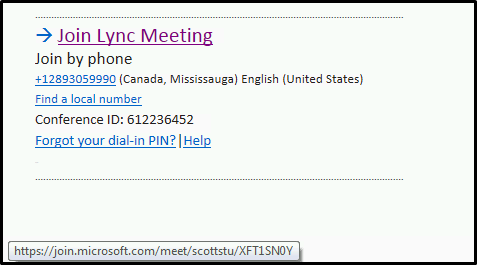
The Lync join launcher page will start up and detect that the user has Lync installed locally

Lync launches and since the user has never signed in stops processing any further. It doesn't provide an error message or description of why you can't join the meeting.
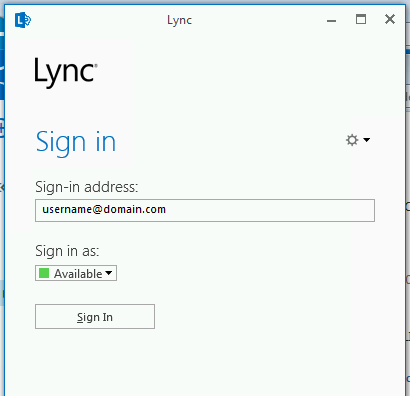
Resolution
After the change the experience is as follows:
The user clicks on a meeting link or pastes the link into a browser
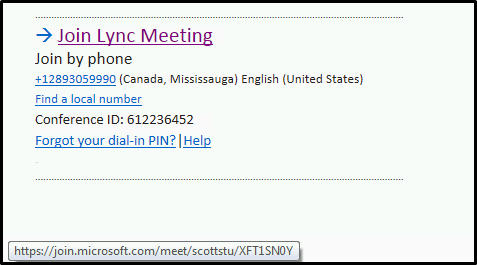
The Lync join launcher page will start up and detect that the user has Lync installed locally

At this point Lync will start up and detect that the user is not signed in and will close.
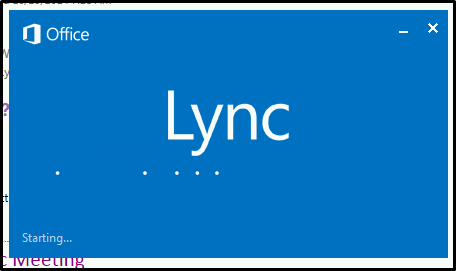
When Lync closes a new browser window launches where the meeting can now be joined via the Lync Web App.
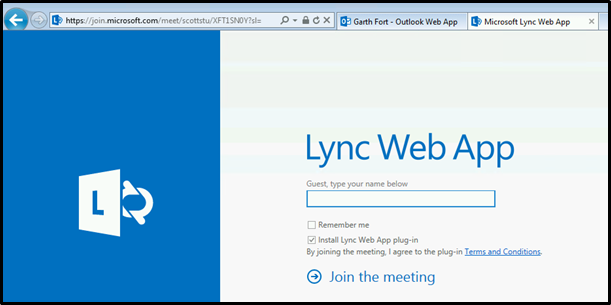
At this point the user can type in a Guest name and can join the meeting.
Notes
This update should automatically be available to any user that is running Office 365 ProPlus or any user that is running Office 2013 Professional Plus and is receiving automatic updates. If you do not see this behaviour ensure that you are running a Lync version greater than 15.0.4623.1001.
This does not change the existing behaviour of the Lync client which automatically launches and signs you in automatically if you click to join a meeting. The change described in this post only impacts user profiles that have never previously signed in to Lync.
This change was made primarily to support users who had legitimately never signed in to Lync before. If you want to clean up a profile though you should be able to delete HKEY_CURRENT_USER\Software\Microsoft\Office\15.0\Lync and then you will get the behaviour described above.
Conclusion
With this change we have overcome a significant meeting join challenge. Please review the change, check it out in your environments and provide us with your feedback.
Comments
- Anonymous
January 01, 2003
Hi there,
The client does not fall back to using the federation record. It actually uses the same SRV record that all external users would use to connect. If you can't publish SRV records that at a minimum you can publish sip.yourdomain.com and anonymous fall back would work.
I do hear your request for a last resort fall back to the Lync Web App and that is currently something that we are thinking about for the future.
Thanks again for reading and providing your feedback.
Scott - Anonymous
January 01, 2003
Great Neeraj, thanks for letting me know. - Anonymous
January 01, 2003
Hi Neeraj,
This change was made primarily to support users who had legitimately never signed in to Lync before. If you want to clean up a profile though you should be able to delete HKEY_CURRENT_USERSoftwareMicrosoftOffice15.0Lync and then you will get the behaviour described above.
Please reply back and let me know how it works
Scott - Anonymous
January 01, 2003
Hi Luke,
Thanks for reading the post and for providing your feedback.
The case you mentioned in your comment should actually work in both the Lync 2010 and Lync 2013 clients. Each client has functionality built in to it to "fall back" to joining anonymously if the user or company is not enabled for federation. I am actually going to write a detailed blog post on it but the situation you describe should work. If it doesn't I would really like to know. Let me know and I will try to find a way to sync up.
The request you have to allow the administrator or user a way to control if the Lync Web app joins automatically is feedback that we have heard in the past and are considering it.
Thanks
Scott - Anonymous
January 01, 2003
Hi Jack,
Thanks for your comments.
As I mentioned in my reply to Luke's post the situation that you are discussing should work today in both Lync 2010 and Lync 2013. There is already functionality built in to both clients that supports fall back to anonymous as long as the user is already signed into Lync in their own environment.
I plan on writing a new blog post in the next month that describes this in detail and shows exactly how it should work.
I would suggest having a look at the client log file of the user from the other organization that is trying to join your meeting anonymously.
Lets say that you are hosting a meeting and your domain is contoso.com. When the user from Fabrikam tries to join the federated join fails and that user's server returns a specific SIP response code and diagnostic message. When the Lync client reads these it knows that it should try to join anonymously. It then tries to do a look up for the SRV record for _sip._tls.contoso.com. If it gets a result and can connect to it directly then it will join.
In the past I have seen issues where this record is not published, the cert is not issued by a public provider, the fabrikam user has a proxy or firewall issue preventing them from connecting etc. There are several reasons why it might fail.
I hope this helps.
Scott - Anonymous
October 30, 2014
A lire!
Description:
We recently made a change to the Lync 2013 client to support the ability to - Anonymous
October 30, 2014
A lire!
Description:
We recently made a change to the Lync 2013 client to support the ability to... - Anonymous
October 30, 2014
A long-awaited and very welcome change! Glad to see it finally get dealt with in a very clean manner. - Anonymous
October 30, 2014
What has been very frustrating is creating Lync meetings that "forces" the Lync Web App to join. For instance: Company A sends out a meeting request to Company B which has their own internal Lync environment, but has no federation between them, in that case, User on Company B clicks on the meeting request, has their Internal Lync client fire up, connects to their own internal pool, and never connect to the Company A meeting.
I have built a complex Exchange transport that detects the above mentioned case, and when the meeting email gets sent from Company A to Company B, the URL is modified with an "?sl" suffix to force the Web App client to fire instead.
It would be TONS easier if there was some sort of External (tied to a SIP domain) policy that would have Lync create the correct URL when it builds it. - Anonymous
October 31, 2014
How can the status "user profiles that have never previously signed in to Lync" be forced on a PC? Just deleting the user's Lync profile folder does not seem to follow this behavior, as Lync fat client still launches.
Additionally, is this same behavior available on Mac versions too?
Thanks. - Anonymous
October 31, 2014
@Luke , you're mentioned solution "exchange transport" I encountered my environment too. could you please information regarding that how do that? My email address ssadoglu at ereteam dot com
Thanks. - Anonymous
October 31, 2014
I like it. I would also like to see to links in the actual email invite - the existing "Join the Meeting" link and another link that says something like "Join the Meeting with Lync Web Access" and includes the ?SL=1 so the user has the choice upfront. - Anonymous
November 05, 2014
Thanks Scott. Deleting the entire "Lync" folder structure in regedit did work as described. - Anonymous
December 04, 2014
I agree with Luke Edson problem. We have latest clients and server fixes. Still, we are default denying all federation, but when a corporate with federation "open" tries to lync with our invitation, will not work. As lync cannot fallback automatically to anonymous. - Anonymous
December 04, 2014
The comment has been removed - Anonymous
April 03, 2015
Overview
I work with many customers and partners on Skype for Business and Lync and one of the areas